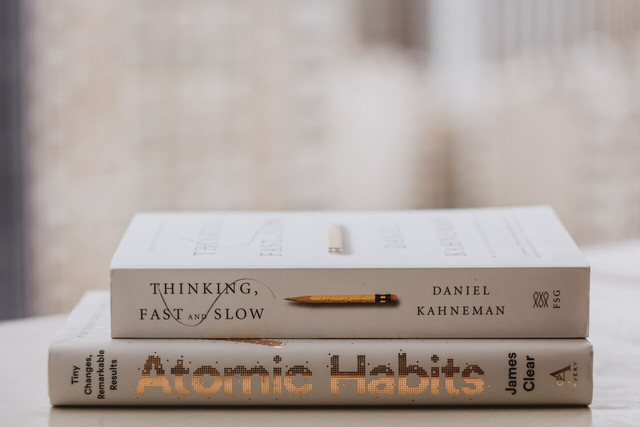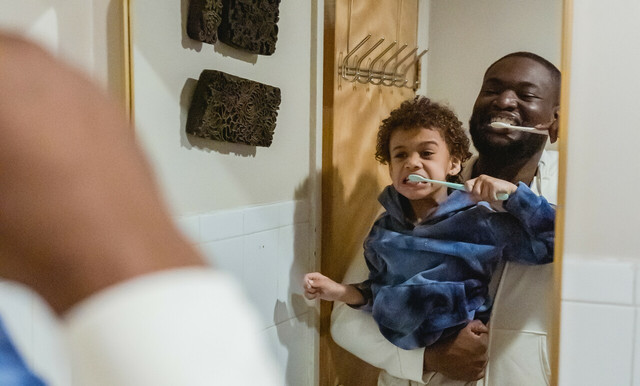Build new healthy habits easily and have a better life without effort — can habit stacking actually help you achieve it? Here's what you need to know.
Are you struggling to develop new good habits and actually stick with them? Habit stacking is a method that takes advantage of your brain’s natural development and helps you build a new routine using old habits. Here is all you need to know about habit stacking, its benefits and drawbacks.
What is Synaptic Pruning?

(Foto: CC0 / Pixabay / ColiN00B)
A synapse, or synaptic connection, is our brain’s tool for learning skills and building habits. It’s a connection between neurons, or nerve cells in our brain, that allows information to travel around our nerve network. The more you repeat a certain behavior, the stronger synapses your brain will build, turning your actions into skills and habits.
In the mid-1970s, German neurologist Peter Huttenlocher studied the formation of synapses in the brains of children and young adults. Huttenlocher discovered that the number of synapses increases more than tenfold during the first year after birth. It makes sense because a baby’s developing brain is trying to learn everything about the world. However, as time passes, the number of synapses rapidly decreases as the brain eliminates connections it deems useless.
Imagine you spent some time abroad as a child and picked up a foreign language. If later you stop using this knowledge, your brain prunes the synapses responsible for it, making you forget everything. This process is known as synaptic pruning. Similar to pruning a fruit tree, your brain removes the weak branches in order to strengthen the stronger, fruit-bearing ones. This is how your brain develops a nerve system based on your experience. And as you age, it gets harder to form new synapses or break old ones.
While building new synapses becomes harder, we can still form new habits using the connections that already exist. This habit-building strategy is known as habit stacking.
How Does Habit Stacking Work?



(Foto: CC0 Public Domain / Unsplash-Lala Azizli)
In his book Atomic Habits (available on Amazon**), behavioral psychologist James Clear offers the following formula for habit stacking:
After/Before/When [CURRENT HABIT], I will [NEW HABIT]
There are many simple actions that you perform effortlessly every day. This includes habits like brushing your teeth, taking a shower, or making a cup of coffee. The synaptic connections responsible for these habits are so strong that you don’t even need to remind yourself to do them. That’s why, according to Clear, it’s a good idea to pair them with the new habits you are trying to develop.
Here are some examples of habit stacking in daily life:
- After I brush my teeth in the evening, I’ll do five minutes of yoga for better sleep.
- After I brush my teeth in the morning, I’ll meditate for one minute.
- After I finish lunch, I’ll walk for 20 minutes.
- Before I take a shower, I’ll do five push-ups.
- When I drink my morning coffee, I’ll think of one good thing that happened to me recently.
How to Incorporate This Method In Your Life



(Foto: CC0 Public Domain / Pexels - Keira Burton)
This is how you use habit stacking to create a new habit in 5 steps:
1. Make a list of all the regular tasks you complete without fail
You might be shocked by how many actions you carry out automatically each day. It includes waking up, taking a shower, changing clothes, brushing your hair and teeth, closing the front door, eating meals, etc. Although the list might be long, try to make an effort to remember all of them.
2. Make a list of things that happen around you regularly
List all important events that have an impact on your routine. For example, this could be your partner and children leaving or coming home at a specific hour.
3. Find where you can stack your new habit
Using the two lists, find where your new habit fits best. The closer you can connect your existing habit to the new one, the better your chances are of sticking to it.
4. Set a clear goal
When you do habit stacking, you can’t make vague plans to “eat healthier” or “exercise”. You have to be very specific about your new behavior. You have better chances to succeed with small steps like “do 10 squats” or “walk for 20 minutes”.
5. Implement and repeat
At first, you can place sticky notes around the house, next to your toothbrush or a coffee mug, to remind yourself of the changes in your routine. And don’t be discouraged if it doesn’t work as planned. Maybe you just need to pair your new habit with something else.
Pros and Cons of Habit Stacking



(Foto: CC0 / Pixabay / 11066063)
Here are some clear benefits of habit stacking that make this technique worth trying:
- You are more likely to stick with the new routine when you add new behaviors to the usual ones instead of changing everything.
- It is easier to remember new tasks when you associate them with something you do every day.
- You can repeat the process and chain numerous habits together, each one acting as a cue for the next.
On the other hand, habit stacking has certain drawbacks that might make it a huge waste of your time:
- It takes a long time to form a chain of new, wholesome habits. You have to take one small step at a time and wait until it becomes a routine before you can stack another habit on top of it.
- If you stack several habits on top of each other and fail one of them, the whole chain might become impossible to follow through.
- Habit stacking can be exhausting when you try to make several changes at the same time.
- It won’t help you make significant changes in your life quickly.
Alternatives to Try



(Foto: CC0 / Pixabay / Pexels)
If you feel like habit stacking is not good enough to deliver the result you want, here are three habit-building strategies you can try instead:
1. “1% a day” rule
The rule states that if you improve your routine by just 1% every day, these small changes will compound and result in a new life someday. Therefore, you just need to make slightly better choices day by day. For example, if you are trying to develop a healthier morning routine but end up oversleeping every time, try waking up just 1-3 minutes earlier, then add a lazy scratching routine, then perhaps try getting out of bed earlier, etc.
2. Implementation intentions
If you are trying to develop a workout routine, you might want to give this method a shot. It works similarly to habit stacking, but instead of pairing a new habit with an old one, you link it to a certain moment in time. Research shows that simply writing down a plan that says exactly when and where you intend to exercise makes it much more likely that you will actually follow through.
3. 30-day challenge
Consider your options carefully before attempting this method because it requires a lot of determination and discipline. The idea is to follow a certain behavior for 30 days straight with no excuses. This way, you try to jump-start your routine and get used to the new habits enough to stick with them in the future.
Read more:
- How to Start Journaling and Make It a Habit: 8 Tips
- Why You Should Have an Afternoon Routine
- Rise and Shine: 3 Major Benefits of a Morning Workout
Important Information regarding Health-related Topics.
** Links to retailers marked with ** or underlined orange are partially partner links: If you buy here, you actively support Utopia.org, because we will receive a small part of the sales proceeds. More info.Do you like this post?







